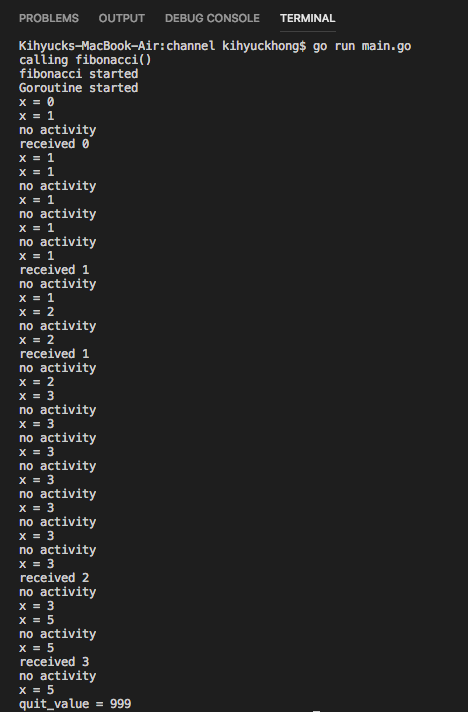
// Set DisableKeepAlives to true when using HTTP/1 otherwise it will cause error: dial tcp :8090: socket: too many open filesĬrt, err := ioutil.ReadFile("./cert/public. ResponseHeaderTimeout: 10 * time.Second, ExpectContinueTimeout: 1 * time.Second, so its like this client establish connection -> client send request -> server gets request and process -> client failed to get the response. TLSHandshakeTimeout: 10 * time.Second, ForceAttemptHTTP2: true, // Set it to false to enforce HTTP/1 // Original configurations from `http.DefaultTransport` variable. if err := http2.ConfigureServer(server, nil) err != nil // Having this does not change anything but just showing. The tests issued requests as in goroutines.

For example based on my tests, HTTP/2 was able to handle 500,000 requests (30sec~) but HTTP/1 barely managed 100 requests with many "broken pipe", "connection reset by peer" errors. The performance benefits of HTTP/2 come from simultaneous/parallel (pipelining) and batch requests. I’m on the record as being against including a lot of dependencies. It comes with a highly capable standard library and a built-in HTTP client. For this to work you will have to use () to close body as soon as possible without deferring it so that the following requests, if any, use existing connections to improve the overall performance. Go is a language designed by Google for use in a modern internet environment. Pipelining allows multiple request and their responses to be communicated in parallel rather than in serial. Golang even provides developers with its default client so, you dont need to create one., All the codes below will require you to use at least Golang. Unless you have a reason to disable it (I cannot imagine why you would anyway), I suggest you to use it.Īnother reason you might accidentally disable connection reusing is not closing the response body as soon as using it. This also depends on the HTTP keep-alive feature which is enabled by default but you might accidentally disable it while creating a custom transport. Moreover, you can make parameters with default. takes place only once which improves the performance. Using Structs with Overriden Defaults You can use the With notation to construct new structs the same way we create requests in the above example. That means connection negotiation, TLS handshake, TCP slow-start strategy so on. In the case of HTTP/2 communications, multiple requests can be made over a single connection.

The solution to this problem is to use HTTP/2 protocol. This would be slow because connection negotiation, TLS handshake, TCP slow-start strategy so on. Let’s configure a Go service to use our Tor Egress proxy service by adding an HTTP_PROXY header so you don't need to use a special Go HTTP client Go client use it by default.In this example we are going to create a TLS based HTTP/2 server and let client communicate with it over HTTP/2 protocol instead of traditional HTTP/1.Ĭonventional HTTP/1 communications are made over their own connections so one request per one connection. The following YAML contains k8s service, and a deployment for Tor (same docker image as above): apiVersion: v1 kind: Service metadata: name: tor namespace: default labels: app: tor spec: selector: app: tor ports: - name: http port: 9050 targetPort: 9050 protocol: TCP - apiVersion: v1 kind: ServiceAccount metadata: name: tor namespace: default - apiVersion: extensions/v1beta1 kind: Deployment metadata: name: tor spec: replicas: 1 strategy: rollingUpdate: maxSurge: 50% maxUnavailable: 50% type: RollingUpdate template: metadata: labels: app: tor spec: serviceAccountName: tor containers: - name: tor image: tufin/tor imagePullPolicy: Always ports: - containerPort: 9050 In order to do that let’s combine all the above, and a little more :)

If your application is running inside a k8s cluster, it would be nice to have an HTTP Tor Proxy, so any internal service can use it. Using Tor as an egress proxy inside a Kubernetes cluster Here’s an example in golang: proxy, _ := url.Parse(" httpClient := &http.Clientįor a more robust HTTP Client checkout this. Explicitly instructing the HTTP client to use a proxy. Set the HTTP_PROXY environment variable: $ export HTTP_PROXY=" HTTP_PROXY environment variable will be used as the proxy URL for HTTP requests and HTTPS requests, unless overridden by HTTPS_PROXY or NO_PROXYĢ. There are three ways to instruct a client to use a proxy:ġ. The default transport.go implementation is interesting. Say you’re a DevOps or a security manager and you want to make sure some or maybe all of your pods use Tor or some other proxy as an egress gateway. Way simpler than I would expect: for each request, it receives a response, if everything works.

Hiding Go HTTP Client Behind a Proxy or Tor


 0 kommentar(er)
0 kommentar(er)
